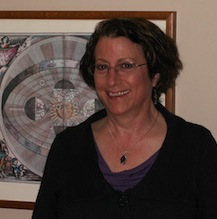
| |
| calendar |
| speakers |
| resources |
| blog |
| contact |
| Lynn Cominsky, Ph.D. |
Marin Science Seminar Presentation: "NASA's NuSTAR's Telescope: A Sharper View of the Universe" (November 12, 2014) Download the flyer here. Launched in June 2012, NASA's NuSTAR telescope is bringing the high-energy Universe into focus. Exploding stars, hidden black holes and other exotic objects are all being studied in an entirely new light. Professor Cominsky will describe the project and her department's involvement with it at Sonoma State University. Professor Cominsky grew up in Buffalo, New York, and attended college at Brandeis University, where she studied Chemistry and Physics. After graduating college, she worked at the Harvard-Smithsonian Center for Astrophysics, analyzing data from the first X-ray astronomy satellite, Uhuru. When she found out that she could get paid for studying black holes, she went to graduate school in physics at MIT, and after getting her Ph.D. there in 1981, she moved to California. She has been on the faculty at Sonoma State University for over 25 years, where she is now Chair of the Department of Physics and Astronomy, as well as the director and founder of SSU's NASA-funded Education and Public Outreach group. Her group supports four different x-ray and gamma-ray satellites: Fermi, Swift, XMM-Newton and NuSTAR. The group runs a robotic telescope north of campus that can be used over the internet by high school and college students nation-wide. Professor Cominsky also served as scientific director for PBS NOVA's “Monster of the Milky Way” and accompanying planetarium show “Black Holes: The Other Side of Infinity.” Previous MSS presentations: “Exploring the Extreme Universe with Fermi” (March 6, 2013) Download the flyer here. NASA's Fermi Gamma-ray Space Telescope (formerly known as GLAST) mission was launched into orbit on June 11, 2008. Its mission is to explore the most energetic and exotic objects in the cosmos: blazing galaxies, intense stellar explosions and super-massive black holes. Using experimental technologies developed by high energy particle physicists, Fermi's astrophysical observations are being conducted by scientists world-wide. Unlike visible light, gamma rays detected by Fermi's Large Area Telescope are so energetic that E = mc2 really matters! I will explain how Fermi uses matter and anti-matter pair production to track gamma rays to their cosmic locations, and will showcase recent exciting results from the mission.
|
Space Science Education & Public Outreach at Sonoma State University
NOVA's Monster of the Milky Way


